provided features
Our Services
It is a long established fact that a reader will be distracted by the readable content of a page when looking at its layout.
consultancy Construction
Refine Construction
innovation Constructor
rebuild Construction
Customize Construction
Digital Architecture
Residential Construction
Residential buildings encompass a wide range of structures designed for people to live in, ranging from single-family homes to high-rise apartment complexes. These buildings can vary in terms of construction methods, architectural styles, and materials used.
Types of residential Buildings
- Single-family homes: Detached dwellings designed for one family.
- Multi-family homes: Buildings with separate living units for multiple families, such as duplexes, triplexes, or apartment buildings.
- Condominiums: Privately owned units within a larger building or community, with shared common areas.
- Townhouses: Narrow, multi-story homes that share walls with adjacent units.
- High-rise buildings: Tall structures containing multiple residential units stacked vertically.
Mode of Constructions
- Traditional construction: Utilizes methods like brick and mortar, concrete, or wood frame construction
- Prefabricated construction: Involves assembling building components off-site before transporting them to the construction site for assembly.
- Modular construction: Constructed off-site in modules, assembled on-site.
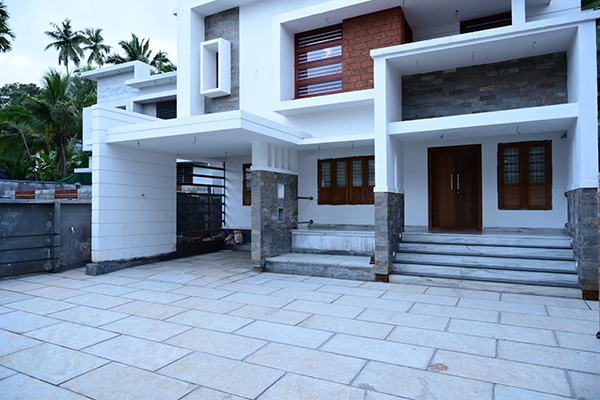
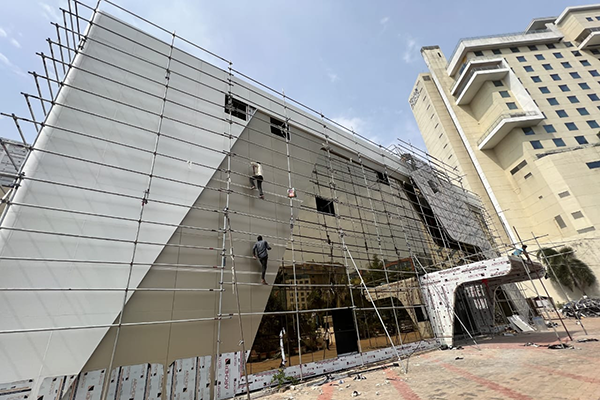
Commercial Construction
Commercial buildings are structures designed for business, retail, or industrial purposes, where goods and services are offered to customers or where business operations take place.
Types of Commercial Buildings
- Office buildings: For businesses, corporations, or government offices.
- Retail buildings: Shopping malls, department stores, standalone shops.
- Hospitality buildings: Hotels, motels, resorts for temporary accommodations.
- Industrial buildings: Factories, warehouses, distribution centers.
- Institutional buildings: Schools, hospitals, government facilities.
- Mixed-use buildings: Combines commercial and residential spaces.
Mode of Constructions
- Steel frame construction: Commonly used for large-scale commercial buildings due to its strength, durability, and ability to support wide spans.
- Concrete construction: Provides stability and fire resistance, often used in high-rise office buildings and industrial structures.
- Prefabricated construction: Components are manufactured off-site and assembled on-site, offering faster construction times and cost savings.
- Modular construction: Standardized, prefabricated, versatile for commercial use.
Pre Fab Structures
Prefabricated structures, or prefab structures, involve the manufacturing of building components off-site before transporting them to the construction site for assembly.
Prefabricated Structures
- Components are manufactured in controlled factory conditions, ensuring precision and quality.
- Faster construction times compared to traditional methods due to simultaneous site preparation and off-site fabrication.
- Offers cost savings through reduced labor and material waste.
- Can include various materials such as steel, concrete, wood, or composite materials.
- Commonly used for modular buildings, portable classrooms, residential homes, and commercial structures.
- Provides flexibility in design, customization, and scalability.
- Offers sustainable benefits by optimizing material usage and minimizing environmental impact.
- Suitable for a wide range of applications, from temporary structures to permanent buildings.
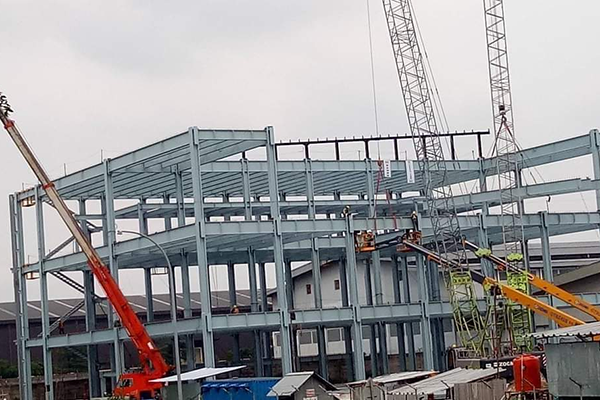
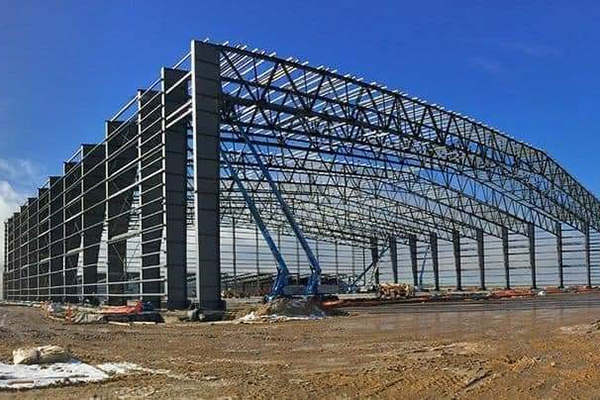
Steel Structures
Steel structures refer to buildings or architectural elements primarily constructed using steel as the main structural material. Steel offers several advantages, including strength, durability, versatility, and the ability to create large open spaces.
Types of Steel Structures
- High-Rise Buildings: Steel's strength-to-weight ratio enables taller and lighter structures, making it ideal for skyscrapers.
- Industrial Facilities: Steel structures in factories and warehouses span large distances without interior columns, offering flexible layouts.
- Bridges: Steel's high strength and corrosion resistance allow for long spans and durable structures, ensuring longevity and safety.
- Stadiums and Arenas: Steel's strength and flexibility are essential for large sports venues, accommodating unique designs and seating capacities.
Mode of Constructions
- Conventional Steel Construction: Steel components are made off-site and assembled on-site using welding, bolting, or riveting. Common for various steel structures like buildings and bridges.
- Pre-engineered Steel Construction: Standardized steel components are prefabricated off-site and transported for assembly, offering quicker construction and cost savings. Ideal for industrial, warehouse, and commercial buildings.
- Modular Steel Construction: Steel modules or sections are fabricated off-site and assembled on-site, suitable for projects needing minimal on-site construction time, like temporary buildings or emergency shelters.
Renovation Works
Renovation refers to the process of improving or updating existing buildings or spaces to enhance their functionality, aesthetics, or value. It involves making changes, repairs, or additions to the interior or exterior of a structure while often retaining its basic structure or form.
Types of renovation works
- Cosmetic Renovation: Focuses on surface-level improvements such as painting, flooring replacement, installing new fixtures, and updating finishes to enhance aesthetics.
- Structural Renovation: Involves modifying or repairing the building's structural elements, such as walls, floors, roofs, or foundations, to address stability issues, accommodate new layouts, or meet building code requirements.
- Systems Renovation: Upgrading or replacing mechanical, electrical, plumbing, and HVAC systems to improve efficiency, safety, and functionality.
- Exterior Renovation: Includes repairs, replacements, or enhancements to the building's exterior elements such as siding, roofing, windows, doors, and landscaping.
- Adaptive Reuse: Repurposing existing buildings for new uses, such as converting warehouses into lofts, barns into event venues, or industrial buildings into offices.
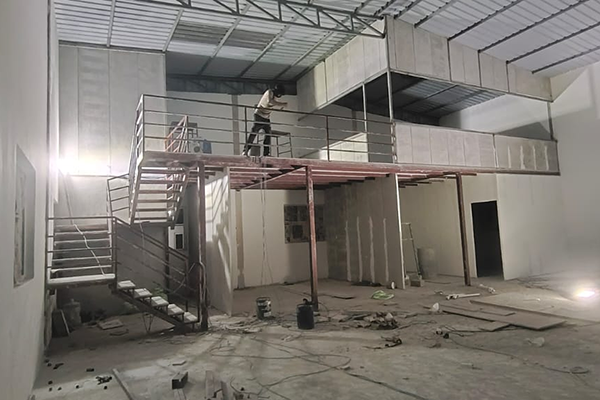
Roofing Works

Roofing with ceramic tiles
Ceramic tile roofing: Durable, aesthetic, energy-efficient. Ideal for both residential and commercial buildings, especially in warm climates.

Roofing with PUFF Sheet
Puff sheet roofing: Cost-effective, durable, energy-efficient. Ideal for commercial and industrial buildings, providing thermal insulation, weatherproofing, and design versatility.

Roofing with Trafford sheet
Trapezoidal/Trafford sheet roofing: Durable, versatile, easy installation. Ideal for residential, commercial, agricultural, and industrial buildings.

Roofing with Shingles
Made from asphalt, fiberglass, wood, slate, or metal. Asphalt shingles are affordable, durable, easy to install. Provides reliable protection, enhances curb appeal.
